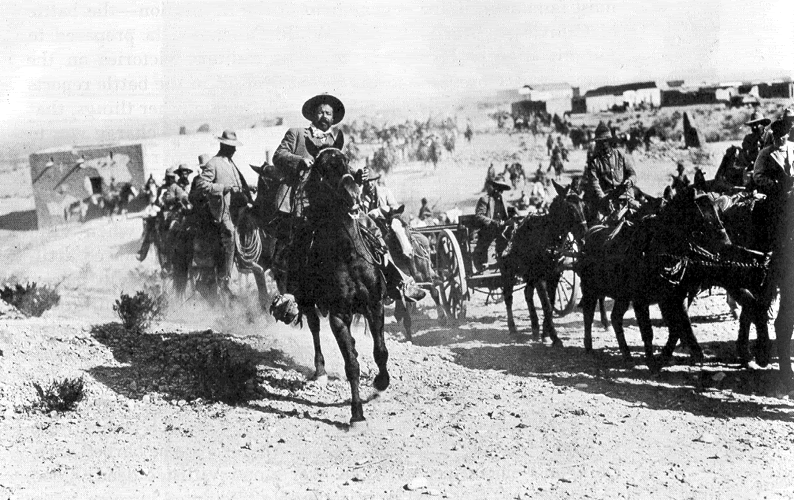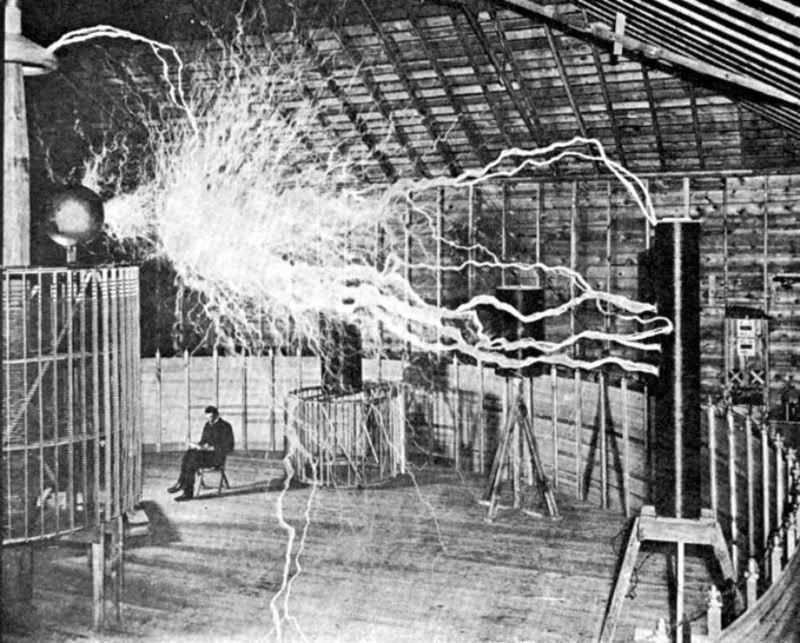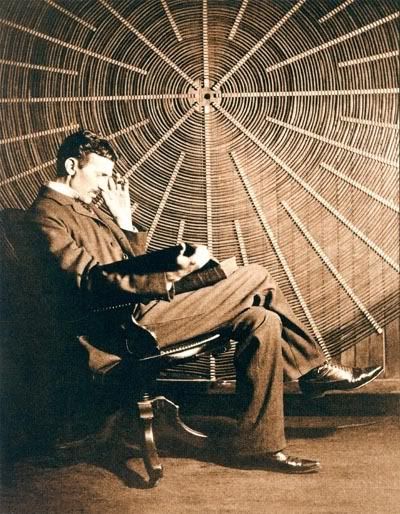Q: You said it was alternate history - about WW1 right. So what's different?
A OK - here's an excerpt going into some of the details of the war circa 1915
May 1915 - After months of stalemate and trench warfare, German forces surge towards Paris, routing Allied troops. Two German innovations in air combat broke the deadlock. The first was the development of a "synchronization gear" that allowed a machine gun to fire through the turning propeller of an aircraft. This made the aircraft of the German air force vastly superior to their opponents. Secondly, the Imperial German Army had trained enough combat mages at this point for the generals to allow several squads to be reassigned to aviation duty. A second seat was retrofitted onto the German fighter planes to allow the addition of a combat mage as a sort of supernatural bomber and tail-gunner.
These two changes decimated the ranks of the Allied air and ground forces and the Central Powers moved the front lines to within 10 miles of Paris. France looked to be on the verge of quick defeat. With their air defenses weakened, Zeppelin bombings become a deadly threat to both Allied military and civilian targets. French and British cities both lived in fear of daily Zeppelin attacks. In Berlin, the Central Powers began drawing plans for an invasion of England. In London, members of parliament openly call for the government to surrender.
On May 7, 1915, the German U-Boat U-20 (operating under the policy of unrestricted submarine warfare) sank the passenger liner RMS Lusitania off the coast of Ireland – killing over 1200 passengers, including 130 wealthy American passengers. This kicked off an anti-German backlash in the US that would ultimately lead to Congress declaring War on Germany in 1917.
July 1915 – The situation could not have gotten much worse for France. It was the time for bold gambles.
With their army retreating, their squadrons of planes reduced to a mere handful and their allies faltering, the French Air Force (the Armée de l'Air) took a chance. They procured several prides of griffins from a Faerie trader at a portal near Marseilles.
While the French Army's wizards had never been able to apply shielding or invisibility spells reliably to aircraft, they have no difficulty applying them to living creatures (usually in the form on amulets) and this provided some measure of protection from the Central Powers combat magic and bullets. The fey trader (an elf noble from the House of Albion sympathetic to the French nation) provided training in the art of griffin riding and aerial combat as well as agreeing to provide the Allied Powers with a steady supply of various magic items (particularly wands and rings) that could be used with ease while engaged in airborne combat.
Soon French soldiers and spellcasters were trained as griffin riders and the new Calvary of the Sky (le Calvaire du Ciel) took to the skies, the last hope of their desperate nation. Although not as fast as the Central Powers planes at top speed, their combination of defensive spells, magical firepower and impressive maneuverability made them a force to be reckoned with.
They had a dramatic impact from the moment they entered service. On their first memorable day, July 28, 1915, the air cavalry downed 8 German zeppelins and 30 fighter escorts in a four hour time span. They also were effective at negating the air support provided by German combat mages. Over four weeks of extensive combat in the summer of 1915, the griffin riders of the Calvary of the Sky single-handedly turned the tide of the war, halting the previously unstoppable Central Powers advance. They saved France from almost an almost certain defeat.
Soon thereafter, Allied infantry supported by squadrons of griffin riders broke out of the trenches and drove the German forces back. Several more prides of griffins were purchased and some were exported across the English Channel along with a small contingent of trainers to assist the English.
August 1915 - Kaiser Wilhelm II responded to the French adoption of griffins into their air force by ordering the Imperial German Army Air Service (Luftstreitkräfte) to begin the immediate creation of their own airborne legions.
Unfortunately for the Central Powers, the fey traders at the Bavarian Portal did not have access to griffins. The best they could offer in terms of airborne mounts were wyverns – barbarous, draconic creatures. Fierce and savage beasts, wyverns had an unfortunate tendency to kill would-be riders. Because of this issue, they could never be deployed in as great numbers as the allied griffins and do not help regain the initiative as Central Powers hoped they would. They do counter the advantage that the griffins gave to the Allied air forces and help to slow their advance. In August, the front lines again stagnate into trench warfare again about 100 miles north and west of Paris (along the banks of the river Somme in the north and the river Meuse in the west).
November 1915- The Allies gained another edge when, in late 1915, an English Rabbi, Seymour Rosenthal, defies the elders of his synagogue and teaches the British Armed Forces the secret of clay golem creation. The golems give the Allies a powerful warrior that is immune to most magical effects. The Jewish community in the United Kingdom stridently protests the military's adoption of this kabbalistic magic as a perversion of their faith – and Rosenthal is banned from attending services at his synagogue.
A OK - here's an excerpt going into some of the details of the war circa 1915
May 1915 - After months of stalemate and trench warfare, German forces surge towards Paris, routing Allied troops. Two German innovations in air combat broke the deadlock. The first was the development of a "synchronization gear" that allowed a machine gun to fire through the turning propeller of an aircraft. This made the aircraft of the German air force vastly superior to their opponents. Secondly, the Imperial German Army had trained enough combat mages at this point for the generals to allow several squads to be reassigned to aviation duty. A second seat was retrofitted onto the German fighter planes to allow the addition of a combat mage as a sort of supernatural bomber and tail-gunner.
These two changes decimated the ranks of the Allied air and ground forces and the Central Powers moved the front lines to within 10 miles of Paris. France looked to be on the verge of quick defeat. With their air defenses weakened, Zeppelin bombings become a deadly threat to both Allied military and civilian targets. French and British cities both lived in fear of daily Zeppelin attacks. In Berlin, the Central Powers began drawing plans for an invasion of England. In London, members of parliament openly call for the government to surrender.
On May 7, 1915, the German U-Boat U-20 (operating under the policy of unrestricted submarine warfare) sank the passenger liner RMS Lusitania off the coast of Ireland – killing over 1200 passengers, including 130 wealthy American passengers. This kicked off an anti-German backlash in the US that would ultimately lead to Congress declaring War on Germany in 1917.
July 1915 – The situation could not have gotten much worse for France. It was the time for bold gambles.
With their army retreating, their squadrons of planes reduced to a mere handful and their allies faltering, the French Air Force (the Armée de l'Air) took a chance. They procured several prides of griffins from a Faerie trader at a portal near Marseilles.
While the French Army's wizards had never been able to apply shielding or invisibility spells reliably to aircraft, they have no difficulty applying them to living creatures (usually in the form on amulets) and this provided some measure of protection from the Central Powers combat magic and bullets. The fey trader (an elf noble from the House of Albion sympathetic to the French nation) provided training in the art of griffin riding and aerial combat as well as agreeing to provide the Allied Powers with a steady supply of various magic items (particularly wands and rings) that could be used with ease while engaged in airborne combat.
Soon French soldiers and spellcasters were trained as griffin riders and the new Calvary of the Sky (le Calvaire du Ciel) took to the skies, the last hope of their desperate nation. Although not as fast as the Central Powers planes at top speed, their combination of defensive spells, magical firepower and impressive maneuverability made them a force to be reckoned with.
They had a dramatic impact from the moment they entered service. On their first memorable day, July 28, 1915, the air cavalry downed 8 German zeppelins and 30 fighter escorts in a four hour time span. They also were effective at negating the air support provided by German combat mages. Over four weeks of extensive combat in the summer of 1915, the griffin riders of the Calvary of the Sky single-handedly turned the tide of the war, halting the previously unstoppable Central Powers advance. They saved France from almost an almost certain defeat.
Soon thereafter, Allied infantry supported by squadrons of griffin riders broke out of the trenches and drove the German forces back. Several more prides of griffins were purchased and some were exported across the English Channel along with a small contingent of trainers to assist the English.
August 1915 - Kaiser Wilhelm II responded to the French adoption of griffins into their air force by ordering the Imperial German Army Air Service (Luftstreitkräfte) to begin the immediate creation of their own airborne legions.
Unfortunately for the Central Powers, the fey traders at the Bavarian Portal did not have access to griffins. The best they could offer in terms of airborne mounts were wyverns – barbarous, draconic creatures. Fierce and savage beasts, wyverns had an unfortunate tendency to kill would-be riders. Because of this issue, they could never be deployed in as great numbers as the allied griffins and do not help regain the initiative as Central Powers hoped they would. They do counter the advantage that the griffins gave to the Allied air forces and help to slow their advance. In August, the front lines again stagnate into trench warfare again about 100 miles north and west of Paris (along the banks of the river Somme in the north and the river Meuse in the west).
November 1915- The Allies gained another edge when, in late 1915, an English Rabbi, Seymour Rosenthal, defies the elders of his synagogue and teaches the British Armed Forces the secret of clay golem creation. The golems give the Allies a powerful warrior that is immune to most magical effects. The Jewish community in the United Kingdom stridently protests the military's adoption of this kabbalistic magic as a perversion of their faith – and Rosenthal is banned from attending services at his synagogue.






